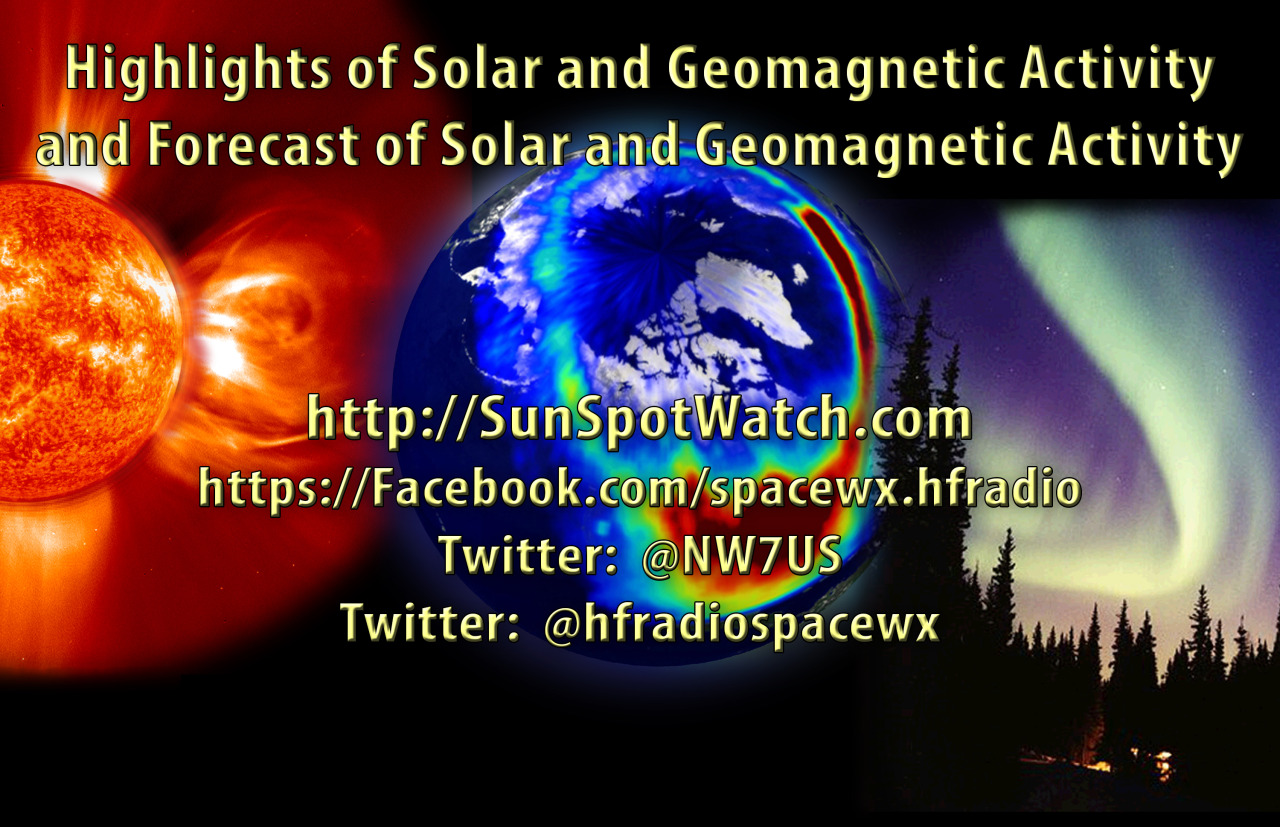 Weekly Propagation Summary – 2016 Sep 19 16:10 UTC
Weekly Propagation Summary – 2016 Sep 19 16:10 UTC
Here is this week’s space weather and geophysical report, issued 2016 Sep 19 0130 UTC.
Highlights of Solar and Geomagnetic Activity 12 – 18 September 2016
Solar activity was at very low levels throughout the period. Region 2585 (N08, L=222, class/area=Ekc/590 on 03 Sep) was the largest and most magnetically complex region on the disk this week, however, the region only produced low-level B-class flare activity before rotating out of view early in the period. Region 2592 (N14, L=027, class/area=Bxo/10 on 18 Sep) produced several low-level B-class flares in the latter half of the week, but was relatively simple throughout the period. No Earth-directed coronal mass ejections (CMEs) were observed this period.
No proton events were observed at geosynchronous orbit.
The greater than 2 MeV electron flux at geosynchronous orbit reached high levels on 12-14 Sep, moderate levels on 18 Sep, and were at normal levels on 15-17 Sep.
Geomagnetic field activity was quiet on 13, 16-27 Sep and quiet to unsettled on 12, 14-15, and 18 Sep under a mostly nominal solar wind regime.
Forecast of Solar and Geomagnetic Activity 19 September – 15 October 2016
Solar activity is expected to be at very low levels with a change for C-class flares throughout the period.
No proton events are expected at geosynchronous orbit.
The greater than 2 MeV electron flux at geosynchronous orbit is expected to reach very high levels on 02-05 Oct with high levels expected on 21-25, 29 Sep-01 Oct, and 06-11 Oct following solar wind enhancements associated with the influence of multiple coronal hole high speed streams. Electron flux is expected to be at normal or normal to moderate levels throughout the remainder of the period.
Geomagnetic field activity is likely to reach G2 (Moderate) geomagnetic storm levels on 28-30 Sep and G1 (Minor) storm levels on 19-20 Sep and 01 Oct due to the anticipated influence of multiple, recurrent coronal hole high speed streams. Active conditions are expected on 21 Sep and 02-05 Oct with generally quiet or quiet to unsettled conditions likely throughout the remainder of the period.
Don’t forget to visit our live space weather and radio propagation web site, at: http://SunSpotWatch.com/
Live Aurora mapping is at http://aurora.sunspotwatch.com/
If you are on Twitter, please follow these two users: + https://Twitter.com/NW7US + https://Twitter.com/hfradiospacewx
Get the space weather and radio propagation self-study course, today. Visit http://nw7us.us/swc for the latest sale and for more information!
Check out the stunning view of our Sun in action, as seen during the last five years with the Solar Dynamics Observatory (SDO): https://www.youtube.com/watch?v=zXN-MdoGM9g
We’re on Facebook: http://NW7US.us/swhfr













